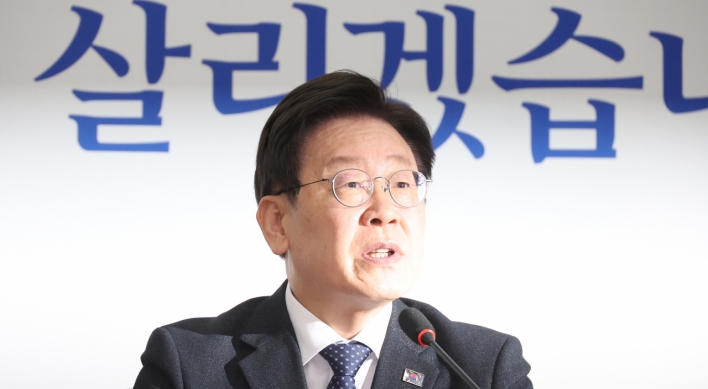Gwangju Biennale announces artists, commissioned works to be unveiled in April
By Park YunaPublished : Feb. 8, 2023 - 11:24

The 14th Gwangju Biennale, scheduled to begin April 17 under the theme of "Soft and weak like water," will be joined by 79 artists from across the world. More than 40 works were commissioned for Asia's oldest contemporary art biennale.
The 94-day biennale will take place at the Gwangju Biennale Exhibition Hall in Gwangju, the main exhibition space of the biennale, as well as at venues throughout the city including Gwangju National Museum, Horanggasy Artpolygon, Mugaksa and Artspace House. This year's biennale is curated by artistic director Lee Sook-kyung, associate curator Kerryn Greenberg and assistant curators Leam Soo-young and Harry C. H. Choi.

Working with artisans and musicians in South Korea, Paris-based artist Tarek Atoui has developed an ensemble of instruments and sound objects. For many years, the artist has been making sound recordings in close proximity to, or under, the water to document the ecological, historical and industrial realities of coastal cities.
Yokohama-based artist Meiro Koizumi’s new five-channel projection installation, “Theater of Life,” brings attention to the marginalized communities of Gwangju. Koizumi traces the diasporic history of "Koryo-in" -- ethnic Koreans forcibly relocated from Russia’s Far East to Central Asia by Joseph Stalin in the 1930s. Taking archival documents of the Koryo Theater founded in 1932, the Japanese artist collaborated with a group of teenagers from Gwangju’s Koryo-in community for his work.

The Buddhist temple Mugaksa, one of the five venues of the biennale, will feature meditative works that reflect the cyclical nature of life by artists such as Indian photographer Dayanita Singh, Chinese ceramic and installation artist Liu Jinhua, and Vietnamese artist Huong Dodinh.
Dodinh, who left Vietnam and settled in France due to the Vietnam War, creates abstract paintings that trace one’s inner creative motivation through delicate, almost imperceptible painterly expressions such as minute movements of the brush and slight variations of color.
Another venue, Horanggasy Artpolygon, which is now used as a community art space, bears the history of Japanese colonization, anticolonial resistance and Christian evangelization in the country. Featured here will be a site-specific sound installation “I/O” by Tokyo-based artist Yuko Mohri, inspired by the Man Booker International Prize-winning novel, "The White Book," by Han Kang.
The biennale will offer several public programs during the art event.
The Gwangju Biennale Foundation and Hyundai Tate Research Centre: Transnational will co-host a symposium on April 7 to 8, addressing artistic practices and discourses.







![[Hello India] Hyundai Motor vows to boost 'clean mobility' in India](http://res.heraldm.com/phpwas/restmb_idxmake.php?idx=644&simg=/content/image/2024/04/25/20240425050672_0.jpg&u=)










